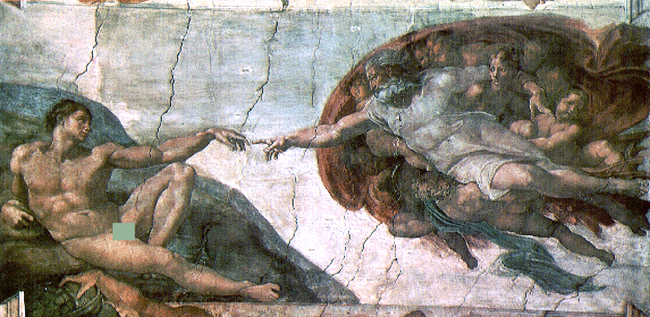|
|
|
MICHELANGELO DI LODOVICO BUONARROTI SIMONI (b. March 6, 1475, Caprese, Republic of Florence [Italy]--d. Feb. 18, 1564, Rome), Italian Renaissance sculptor, painter, architect, and poet who exerted an unparalleled influence on the development of Western art.
Michelangelo resisted the paintbrush, vowing with his characteristic vehemence that his sole tool was the chisel. As a well-born Florentine, a member of the minoraristocracy, he was temperamentally resistant to coercion at any time. Only the power of the pope, tyranical by position and by nature, forced him to the Sistineand the reluctant achievement of the world's greatest single fresco. His contemporaries spoke about his terribilita, which means, of course, not so much beingterrible as being awesome. There has never been a more literally awesome artist than Michelangelo: awesome in the scope of his imagination, awesome in hisawareness of the significance--the spiritual significance--of beauty. Beauty was to him divine, one of the ways God communicated Himself to humanity.
Like Leonardo, Michelangelo too had a good Florentine teacher, the delightful Domenico Ghirlandaio (c.1448-94). Later, he was to claim that he never had a teacher,and figuratively, this is a meaningful enough statement. However, his handling of the claw chisel does reveal his debt to Ghirlandaio's early influence, and this isevident in the cross-hatching of Michelangelo's drawings--a technique he undoubtedly learned from his master. The gentle accomplishments of a work like TheBirth of John the Baptist bear not the slightest resemblance to the huge intelligence of an early work of Michelangelo's barn The Holy Family, also known as theDoni Tondo. This is somehow not an attractive picture with its chilly, remote beauty, but its stark power stays in the mind when more acessible paintings havebeen forgotten.
Michelangelo was a heavyweight intellectual and poet, a profoundly educated man and a man of utmost faith; his vision of God was of a deity all "fire and ice'',terrible, august in His severe purity. The prophets and the seers who are called by divine vocation to look upon the hidden countenance of God have an appropriatelargeness of spirit. They are all persons without chitchat in them.
All the same, it is the Sistine ceiling that displays Michelangelo at the full stretch of his majesty. Recent cleaning and restoration have exposed this astonishingwork in the original vigour of its color. The sublime forms, surging with desperate energy, tremendous with vitality, have always been recognized as uniquely grand.Now these splendid shapes are seen to be intensely alive in their color, indeed shockingly so for those who liked them in their previous dim grandeur.
The story of the Creation that the ceiling spells out is far from simple, partly because Michelangelo was an exceedingly complicated man, partly because he dwellshere on profundities of theology that most people need to have spelt out for them, and partly because he has balanced his biblical themes and events with giantignudi, naked youths of superhuman grace. They express a truth with surpassing strength, yet we do not clearly see what this truth actually is. The meaning ofthe ignudi is a personal one: it cannot be verbalized or indeed theologized, but it is experienced with the utmost force.
(Above text from Encyclopedia Brittanica and The Web Museum, Paris.)
